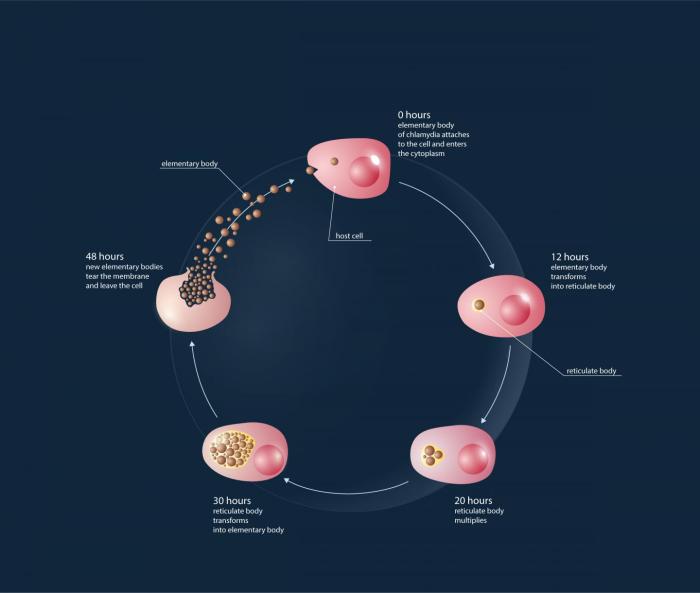Label the stages and structures of the chlamydia life cycle to gain insights into the intricate biological processes that govern this enigmatic pathogen. Understanding the chlamydia life cycle is paramount for accurate diagnosis, effective treatment, and successful prevention strategies.
Chlamydia, a prevalent sexually transmitted infection, exhibits a unique life cycle that alternates between two distinct forms: the infectious elementary body and the intracellular reticulate body. This article delves into the intricate details of each stage, exploring the structural characteristics, metabolic activities, and critical roles played in the pathogen’s survival and transmission.
Introduction to Chlamydia Life Cycle

Chlamydia is an obligate intracellular bacterium, meaning it can only survive and reproduce within the cells of a host organism. Understanding the Chlamydia life cycle is crucial for accurate diagnosis, effective treatment, and preventive measures.
Stage 1: Elementary Body: Label The Stages And Structures Of The Chlamydia Life Cycle

The elementary body is the infectious form of Chlamydia. It is a small, spherical cell with a diameter of about 0.2-0.3 micrometers. Elementary bodies are non-motile and have a rigid cell wall, making them resistant to environmental conditions.
The elementary body is responsible for transmission and infection. It can survive outside the host cell for short periods and can be transmitted through contact with infected bodily fluids.
Stage 2: Reticulate Body

Once inside the host cell, the elementary body transforms into the reticulate body. The reticulate body is larger than the elementary body, with a diameter of about 0.5-1 micrometer. It has a fragile cell wall and is metabolically active.
The reticulate body undergoes binary fission within the host cell, producing more reticulate bodies. This intracellular replication leads to the formation of an inclusion body.
Stage 3: Inclusion Body
The inclusion body is a membrane-bound compartment within the host cell where reticulate bodies replicate. It protects the developing Chlamydia from host defenses.
The inclusion body can contain hundreds or thousands of reticulate bodies. As the inclusion body grows, it becomes more visible under a microscope.
Stage 4: Elementary Body (Reformation)

When the inclusion body matures, the reticulate bodies transform back into elementary bodies. The newly formed elementary bodies are smaller and more resistant than the reticulate bodies.
The elementary bodies are released from the host cell by lysing the inclusion body. They can then infect new host cells and continue the life cycle.
FAQ
What is the significance of understanding the chlamydia life cycle?
Understanding the chlamydia life cycle is crucial for developing accurate diagnostic tests, designing effective treatments, and implementing targeted prevention strategies.
How does the elementary body differ from the reticulate body?
The elementary body is the infectious form of chlamydia, while the reticulate body is the metabolically active form that replicates within host cells.
What is the role of the inclusion body in the chlamydia life cycle?
The inclusion body provides a protective environment for chlamydia to replicate and evade host defenses.